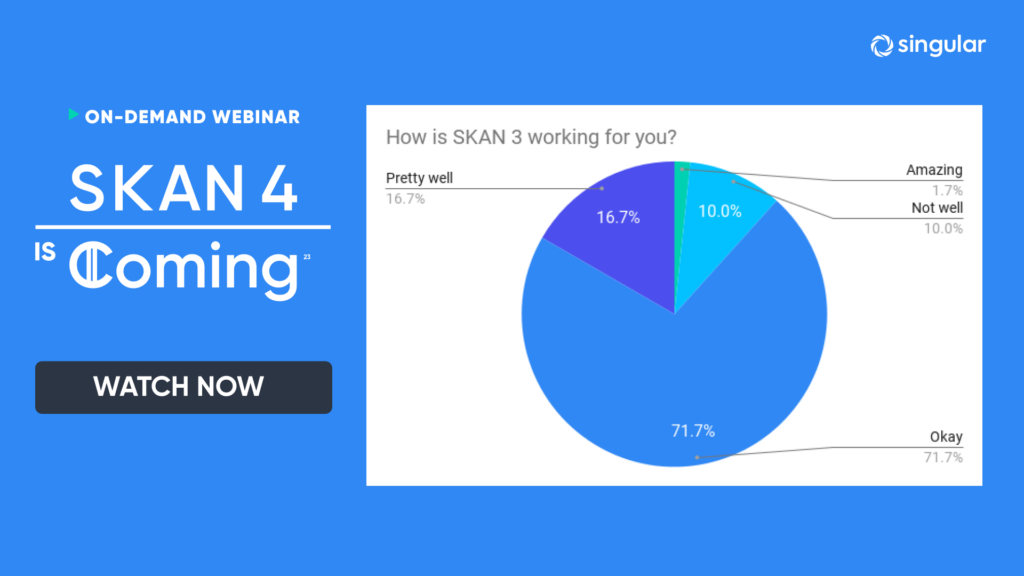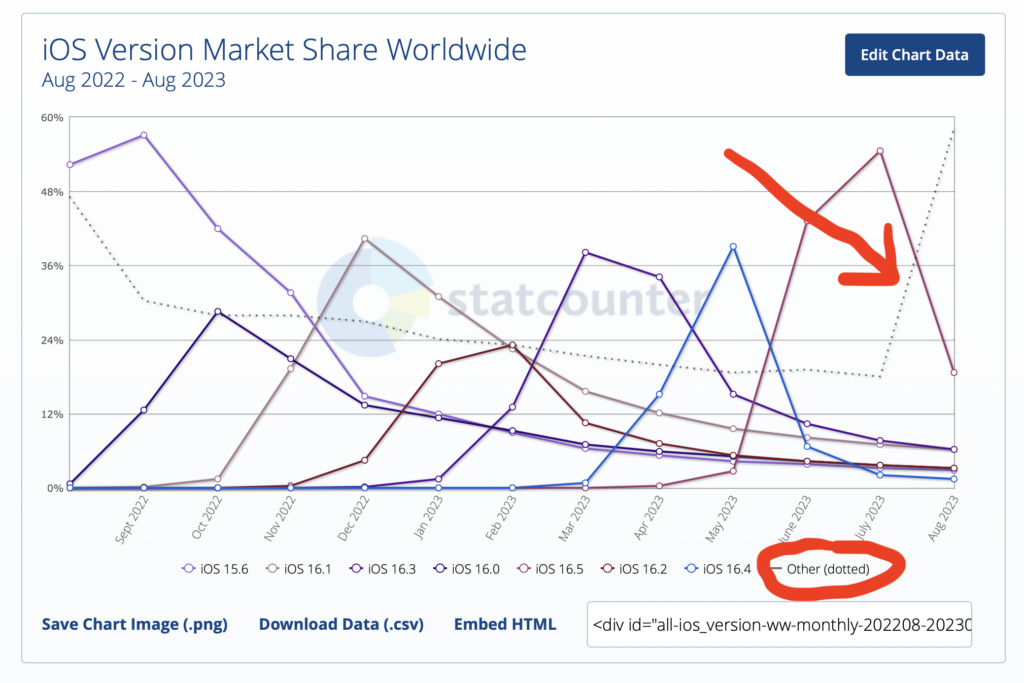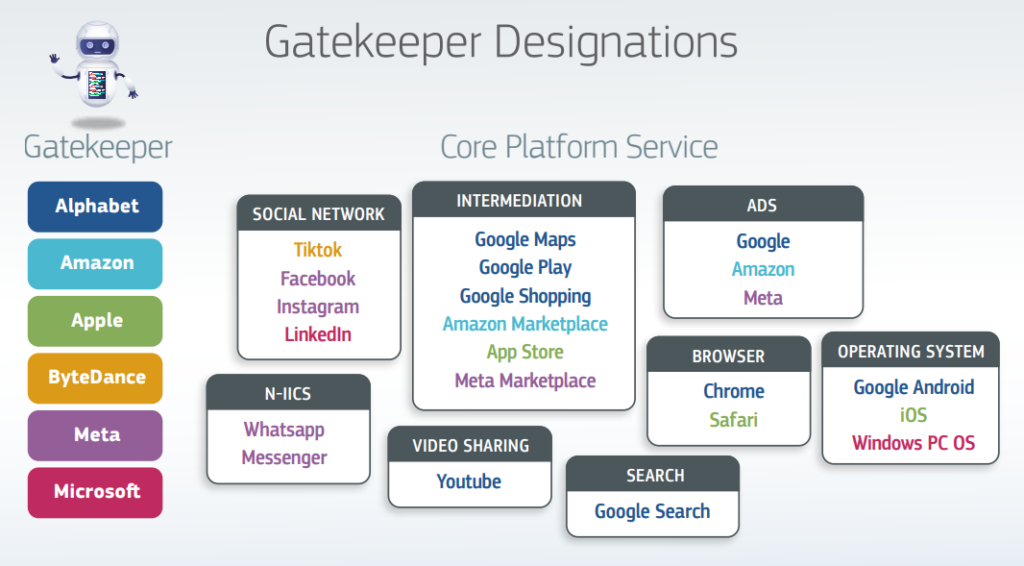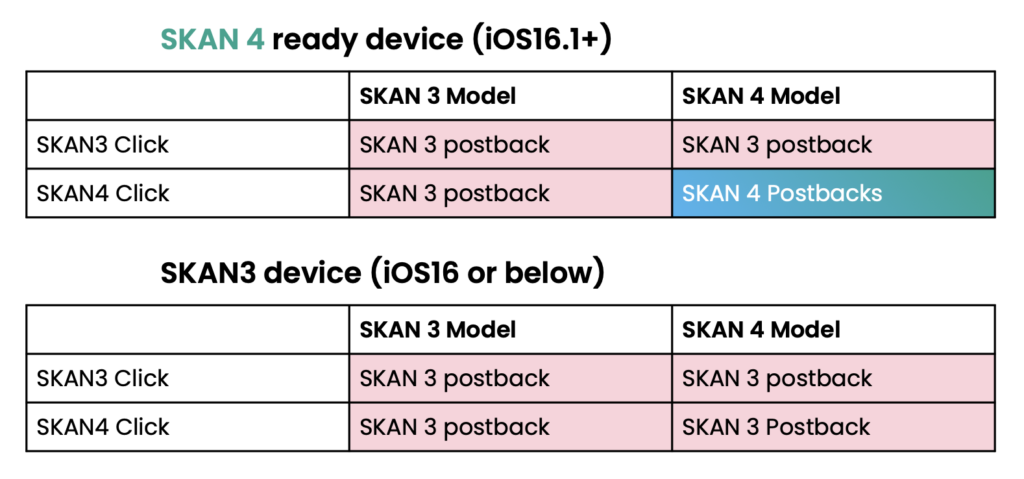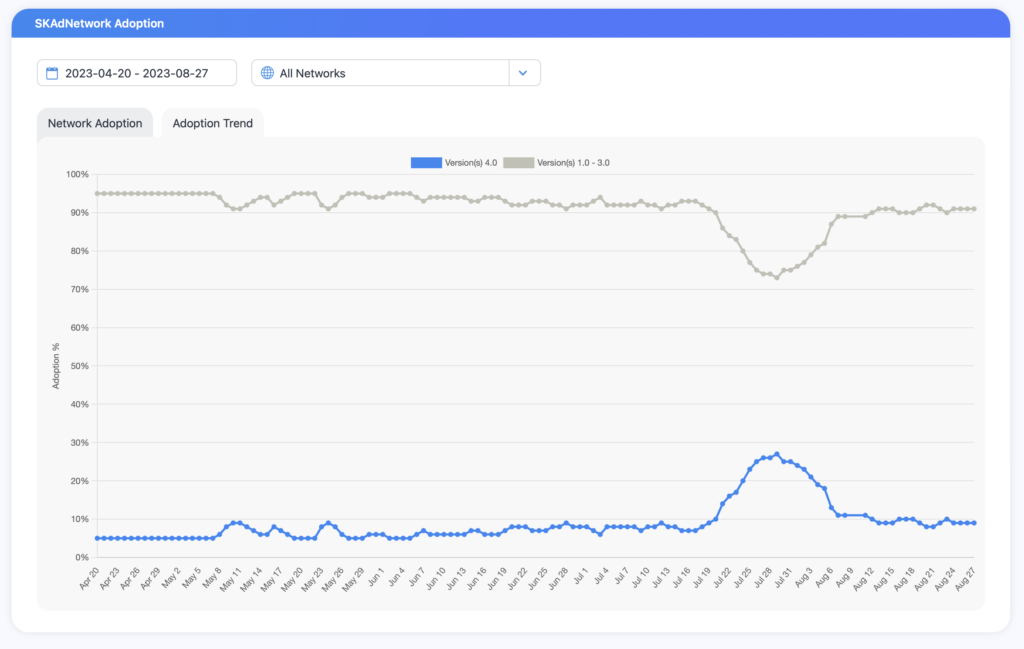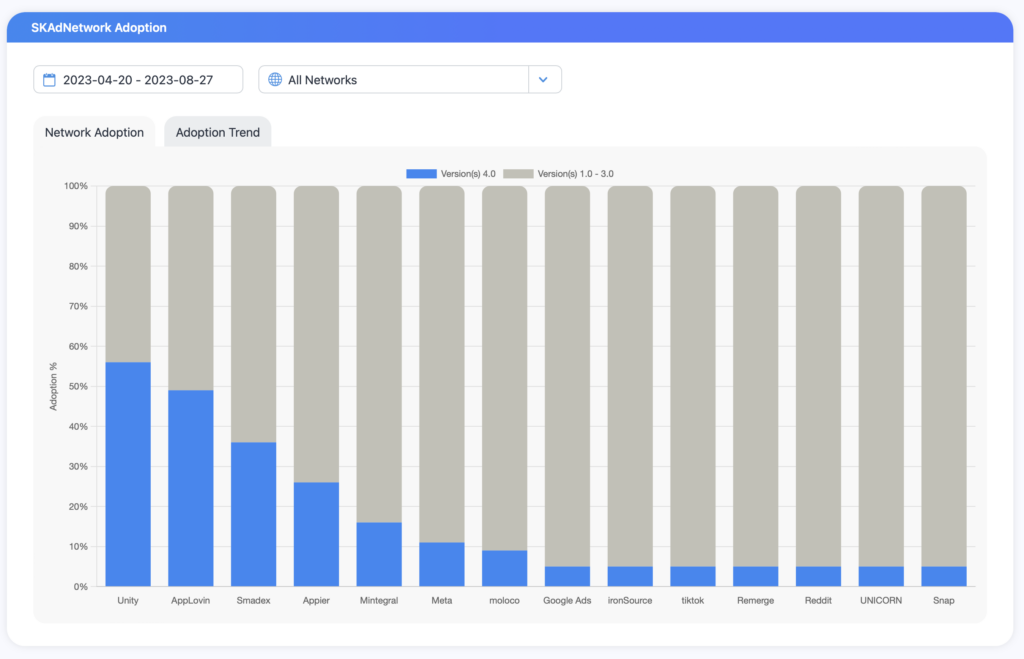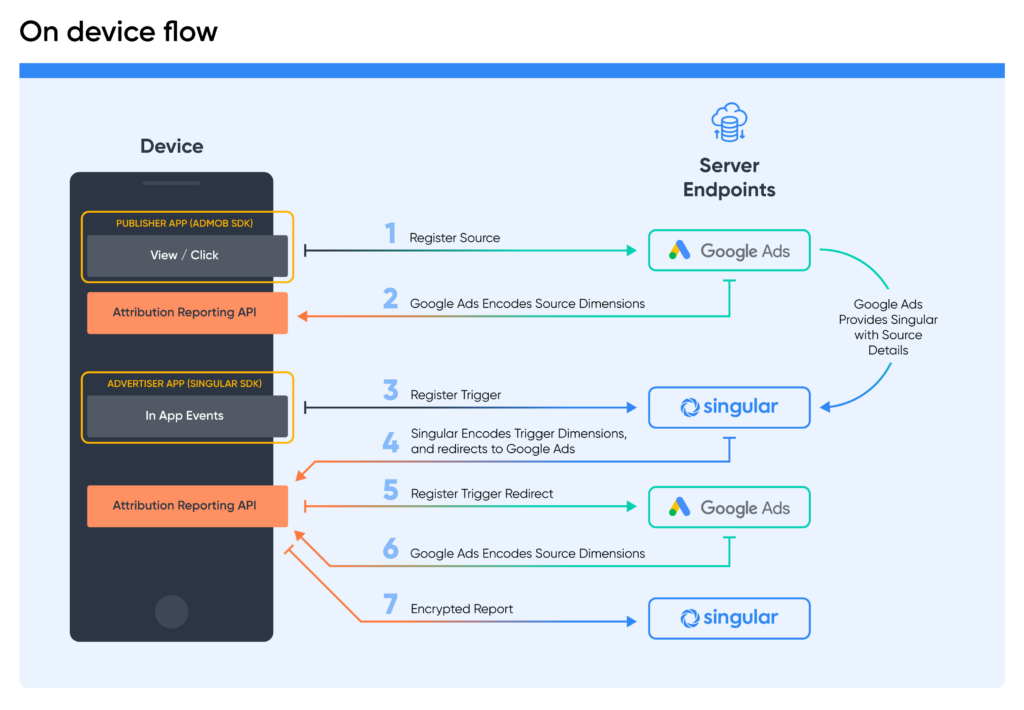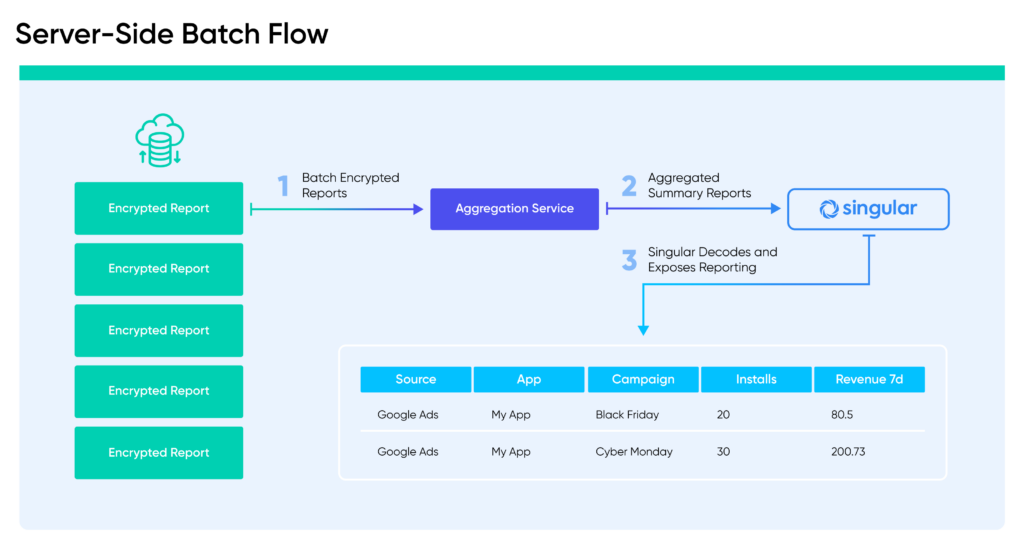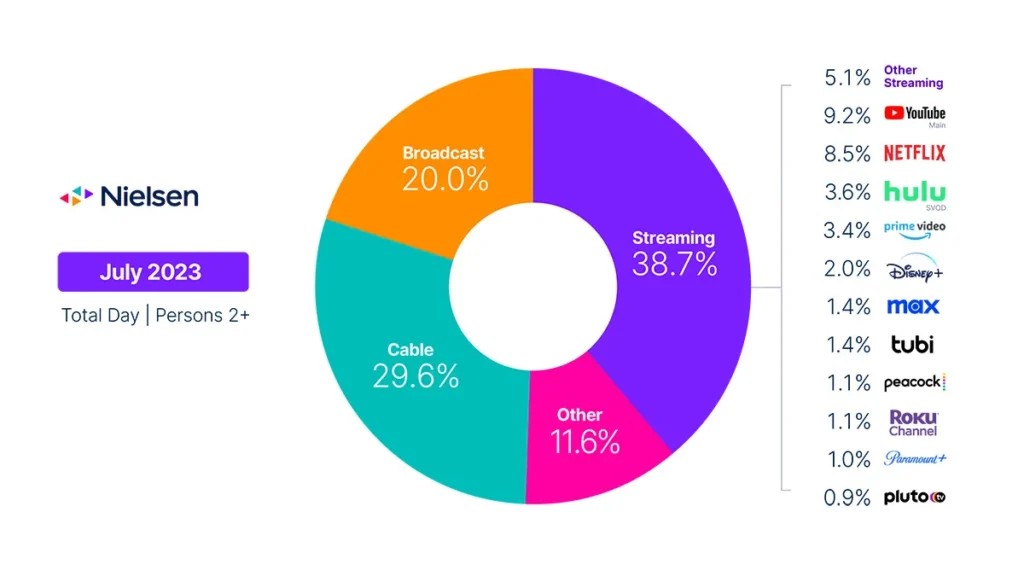So you want to learn all the ad monetization hacks, unlock the keys to success, and grow to $50,000 or $80,000 a day in admon revenue? Who doesn’t? In a recent episode of Singular’s Growth Masterminds podcast, I chatted with admon expert Felix Braberg about everything ad monetization.
What we covered:
- The Google Ad Manager ad monetization hack that is shutting down, costing publishers 8-18% ad ARPDAU
- Moloco’s instant 10-year success and how to get a 8-11% lift on revenue
- How Amazon Publisher Services (APS) has grown from 10-17% of adshare in America
- How APS will likely massively grow that in Q4 of 2023
- How ad monetization hacks can boost your growth to your first million users
- The current shift BACK to ads from subscriptions
- Duolingo’s estimated daily ad revenue
- Organic growth
- Hyper casual to hybrid casual … but also why hyper casual is Not Dead Yet™
- Unwritten rules in ad monetization and how to access them
- Luck vs skill in mobile growth
- And much more!
To get started, press play on the video above.
Then keep scrolling to get more of the details.
Subscribe to Growth Masterminds
I’m sharing some of the highlights below, but subscribe to the Growth Masterminds podcast to never miss out on insight.
Start here: subscribe to our YouTube channel.
Then, pick your favorite podcasting platform and put us on your phone:
- Apple Podcasts
- Spotify
- Google Podcasts
- And pretty much any other major platform you prefer …
Ad monetization hacks with Felix Braberg
The Google Ad Manager hack is closing down, sadly. And brand spend has withered away in the past half year while the economy takes a nap.
But there are still ad monetization hacks available.
And one of them is going direct with a DSP that gets really big. The most current example: Moloco.
“What I’ve seen lately is that if you go direct and if you have some kind of volume, usually you’re able to get an 8 to 11% uplift on ad ARPDAU by going directly to Moloco,” Braberg says. “And that’s like a hack that didn’t exist because they didn’t have an SDK a year ago.”
That’s probably less of a hack than a tactic, Braberg says, but it’s still a massive win and it offsets some of the 8-18% ad ARPDAU you’re missing as the window closes on the opportunity to play Google Ad Manager against AdMob and Google bidding.
Another source of revenue that’s been growing surprisingly fast is APS: Amazon Publisher Services.
“Two years ago, they were sub 10%,” Braberg says. “Now they’re about 17% in America of overall impressions, which is quite impressive … they’ve gone gung ho in saying, yeah, your margin is my opportunity. So they’ve entered in with their e-commerce demand, and then on the side they’ve been letting you as a publisher hack the system by basically doing direct TAM deals [Amazon’s Transparent Ad Marketplace] where basically they drop their margins to near zero, and then you benefit greatly from that.”
Why Amazon is set to keep growing quickly in Q4
Amazon Publisher Services is kind of a one-trick pony right now. They pretty much don’t do anything but banner ads well because their video tech isn’t quite on par with other players.
“They’re only good at banners right now because of the one fact is that on video inventory they don’t have any adjustable end cards,” Braberg says. “So you physically actually can’t have an end card where you have to click out of it. It just kind of ends.”
That compares poorly to SDK networks that have highly-evolved video and rewarded ad tech on mobile with aggressive end cards and aggressive SKOverlay implementations that push click-through rates in some cases to north of 80%.
We can of course have a long conversation about the ethics and utility of that kind of adtech aggression — and I have — but the fact remains that in an adtech arms race, APS is showing up to a gun fight with a knife.
Q4 is when APS is likely to unveil new tech for video ad end cards, and hopefully the result will be both more respectful to users, less destructive of the CTR metric, and also more effective and driving the right kind of business.
Subscriptions vs ad monetization
A year ago, everything was all about subscription revenue. Getting it, boosting it, building for it, measuring and optimizing ads for it: you name it. In a down economy, that trend is reversing somewhat, Braberg says.
“I think there’s been some really cool companies like Duolingo that really led the charge on this—or Redecor—that have some really good ad placements,” Braberg says. “And a lot of subscription-based ads are looking at this and taking notice because … they’re probably making anywhere between 50 to 80 grand a day currently on ads, which would put them as a really big mid-size gaming company in terms of ad revenue. And I don’t think that would even be possible three, four years ago.”
The more things change, the more they stay the same, huh?
The key to success in ad monetization is two-fold:
- Have a lot of users
- Build and nurture a robust in-app economy
Like most things, easier said than done, but if you can get a large number of people to not just install but actually use your app, and then if you pair that with things they want and would like to pay for—with their time if not their cold hard cash—you can build a successful ad monetization platform.
Perhaps not $50,000 to $80,000 a day successful … but I’d take $20,000 a day.
Ad monetization hacks: so much more in the full podcast
Subscribe to the podcast on video and/or audio, and here’s a transcript to get you started.
Felix Braberg: So they’ve entered in with their e-commerce demand, and then on the side they’ve been letting you as a publisher hack the system by basically doing direct TAM deals where basically they drop their margins to near zero, and then you benefit greatly from that.
John Koetsier: How do you acquire your first million users? Hello and welcome to Growth Masterminds. My name, of course, is John Koetsier. As you probably know, we’re on a series, right? It’s about starting up, getting a new app up and running. Maybe you’re reinvigorating an old one. Probably not, but maybe. It’s taking it from the starting blocks to a pretty significant milestone, not the end goal— it’s the journey, not the destination—but it’s your first million users.
Today we’re chatting with somebody who’s helped hundreds of app companies. He’s got a successful app marketing podcast. He’s smart, he’s edgy, he’s not afraid to call it like it is. His name is Felix Braberg of two & a half gamers. Welcome, Felix.
LinkedIn messages for the fail
Felix Braberg: Thank you so much for having me. We’ve been trying to do this for a while.
John Koetsier: I am super pumped to have you. We’ve been working on this forever.
Felix Braberg: Yeah.
John Koetsier: I think problem number one is we were using LinkedIn Messages to communicate, and that is not…everybody knows, that’s a disaster, right? You get 5 million of them a day—I might be exaggerating—most of them are people, Hey, biz dev. I have an SEO.
Felix Braberg: Yeah. I think the first tip to getting your million users: don’t use LinkedIn Messaging.
John Koetsier: No, you’ll get a lot of promises and not much delivery, but you’ll probably pay a few people some things as well. How are you? You are doing amazing things at two & a half gamers. You are consulting with lots of people. How are things going in your life?
Felix Braberg: Ohhh, it is ad monetization consulting, right? So it’s up one day and down the other, right? So, yeah, one thing about ad monetization it’s very much tied to both micro and macroeconomic cycles, right? So what I do is very much tied to how good I look; it’s also a function of how close to Christmas we are. The closer we are to Christmas, the better the work I do makes me look, and the further away from Christmas, the worse it looks.
John Koetsier: Okay. How well you can do is based on how good you look. I mean, I guess that’s the facelift there and that’s the shower in the background [referring to artwork in the background]. I don’t know the guy by the tree there. Excellent.
I know you’re talking about results, obviously. How’s it been recently? What’s been happening in AdMon recently that has you interested, has you confused, has you…what? What’s going on?
Finding ad monetization hacks
Felix Braberg: So this last year, out of all the years I’ve been working in ad monetization, I would say is the year where we’ve seen the most amount of changes. So, ad monetization is always about finding the little hacks that no one talks about, that maybe 200 people in the world know about; utilizing that hack, and that hack usually ends up making you a lot of money.
Up until recently, the most profitable hack has been to utilize Google Ad Manager resellers and competing them against AdMob and Google bidding. This kind of ad monetization hack closes in about 30 days.
That has been, I think, a majority of studios that I work with are mainly monetizing on ad monetization. They’re not very happy about this. And then you slap on the fact also that Google’s making you do a CMP update [Consent Management Platform], otherwise they won’t bid on any European users, has resulted in the fact that this year, kind of the network that at least ad monetizing games and apps are most annoyed with, is Google, because they’re making them do the most amount of work.
But, that’s not the end.
Then you also have this superimposed with a big entrance into the mobile gaming space, and that is APS, Amazon Publisher Services, that have entered into the market in a very Amazon way. Basically they’ve gone gung ho in saying, Yeah, your margin is my opportunity. So they’ve entered in with their e-commerce demand, and then on the side they’ve been letting you as a publisher hack the system by basically doing direct TAM deals [this is Amazon’s Transparent Ad Marketplace] where basically they drop their margins to near zero, and then you benefit greatly from that.
So it’s just … that’s like a lot of changes have happened in a very short amount of time, and that’s maybe half of the changes that’s happened since January. And usually that would be maybe three or four years worth of changes, but it’s all happened within the last seven months. So, a lot of things.
John Koetsier: It seems like everything is that scenario, right? Everything has accelerated. Everything is just happening so quickly right now. Let’s go back to the first one that you mentioned, the arbitrage thing that you talked about with Google. I mean, I understand being pissed off that that’s closing, but I mean, come on … does anybody think that that was gonna continue forever?
Arbitrage never lasts forever
Felix Braberg: I don’t know, but the fact is that there’s a lot of studios, right, that run the kind of the CPI, LTV like calculus and kind of do that arbitrage between getting users.
And, you know, right now if you stop doing that GAM—getting that GAM hack—usually what you’d say is like maybe you’re losing between 8 to 18% on an ad ARPDAU basis, which I’m seeing when I’m running these tests on switching it off. I mean, if you’re running a mobile gaming studio and you’re acquiring millions of users, you know, that 18% is really gonna hurt you, right?
So, by all means, you’re angry with the status quo, but there’s not that much you can do about it because Google’s very large. And no matter how big you are as a gaming company, there is no company or gaming company that’s bigger than Google.
John Koetsier: Yes. Yes. So this suggests, by the way, that in a month a tsunami is hitting and there’s gonna be some real challenges for casual, hyper casual. There’s gonna be some real challenges for anybody else in AdMon. And they’re looking hard for a new hack.
Moloco: a 10-year overnight success
Felix Braberg: They’re already out there. Like, when one door closes, another one opens. This industry is so fascinating because there’s so many small little things you can do, and there’s always people looking for an edge that there’s already things that have popped up that are looking extremely promising.
On the last Two & A Half Gamers podcast, I was mentioning that we’ve had tremendous success with some of my clients with directly integrating Moloco.
Moloco has been this DSP that’s blasted onto the scene. It’s like, I spoke with them at Gamescom and they keep saying it’s a 10-year overnight success. They’ve been slowly humming along. And right now, I’m hearing some rumors—that’s on ALX, and on ironSource exchange, and Digital Turbine exchange—sometimes, in some geos, Moloco is like 45% of DSP revenue that you’re getting.
So, usually a DSP, when it gets that large it makes sense for them to go direct, because then they can cut out the middleman. So what I’ve seen lately is that if you go direct and if you have some kind of volume, usually you’re able to get an 8 to 11% uplift on ad ARPDAU by going directly to Moloco. And that’s like a hack that didn’t exist because they didn’t have an SDK a year ago. So that’s like a new door that’s open. It’s not really a hack, it’s just trying new things.
John Koetsier: Yeah. Yeah. It’s cool. I recently interviewed somebody from Moloco. They’re doing pretty cool stuff, pretty amazing stuff. They rank really well in the Singular ROI Index, the most recent one. They’re heavy on AI, heavy on artificial intelligence to try and learn really, really quickly—apply that. So that is cool.
Let’s go back to the APS thing that you were talking about. What are you seeing there? Do you think that’s a land grab that’ll go away as well? How long do you think that’ll last?
Amazon Publisher Services growth
Felix Braberg: So, if we look at mobile, like in terms of share or revenue over all ads in America, that’s what matters, right?
So, two years ago, they were sub 10%. Now they’re about 17% in America of overall impressions, which is quite impressive. That happened in a very short amount of time. But it’s only banners that they’re really strong on. Right now, they’ve only conquered banners. And they’re only good at banners right now because of the one fact is that on video inventory they don’t have any adjustable end cards.
So you physically actually can’t have an end card where you have to click out of it. It just kind of ends. So they’re playing competition with the big boys on mobile that all have these aggressive end cards that sometimes, you know, have click-through rates of 80%, and they can’t even compete with that.
So they’re always gonna be at a disadvantage until they change that, which won’t be until Q4 this year.
John Koetsier: Mm-hmm. And the other thing that I’m thinking is if they apply a generative AI solution to creating video ads for products that are for sale, that could be super, super interesting.
Felix Braberg: Yeah, they’re also kind of cutting off the overall demand because they’re only letting on certain types of publishers right now to monetize with theirs. So it’s kind of like the most— it’s like the VIP club of ad monetization right now. They’re not letting in everyone.
They’re just letting in the publishers that they think have the biggest overlap with the Amazon ID, which tends to be women over 45, I think they’re looking for, so … yeah. Social Casino and Match 3, they get entrance straight away because that’s usually the kind of segment that, like, it’s tailored to them.
John Koetsier: C’mon, where’s the first-person shooter, Amazon?
Felix Braberg: Exactly.
John Koetsier: Okay, cool. Okay, so that is some cool new stuff that’s happening. Some doors are opening, some doors are closing. And I guess you better build an app that is for women over 40.
Let’s talk about your first million users. Clearly, as you have, you’ve got your Amazon—sorry, your AdMon hat firmly screwed on. That is you.
Felix Braberg: Yeah.
John Koetsier: That’s what you do. That’s what you focus on; you’re an expert. That’s where you go there. So if you’re looking at apps that are looking for their first million users, what are the pathways that you’re seeing right now?
Ad monetization hacks? Ad mon is the hack in mobile!
Felix Braberg: So, purely speaking from an ad monetization perspective, AdMon is kind of the hack in mobile. So, a majority of the things we do on mobile, like most of the users that we acquire, don’t actually add to the bottom line.
In mobile gaming, you’re very lucky, like a Supercell game, if they’re getting 1.5 to 2% conversion—like users converting to an IAP—that’s considered amazing. You’d be shouting that off the mountaintops, right?
But that still means you don’t convert or actually get any value from the 98% of users that you pay for, most likely, to get into your app or into your game.
So what ad monetization is, it’s a way to earn some sort of revenue from that user base. Actually, like the biggest growth in my consulting segment that I’ve seen in the last year has actually been from mobile companies looking at subscription-based mobile companies looking to actually diversify their income away from subscriptions. And the way of doing that is basically rebuilding or tailoring their app with mobile ads.
I think there’s been some really cool companies like Duolingo that really led the charge on this—or Redecor—that have some really good ad placements. And a lot of subscription-based ads are looking at this and taking notice because, yeah, I think … what is it that we estimated?
Duolingo is probably one of the biggest mobile app publishers out there.
Probably, I think we estimated they’re probably making anywhere between 50 to 80 grand a day currently on ads, which would put them as a really big mid-size gaming company in terms of ad revenue. And I don’t think that would even be possible three, four years ago.
So, I guess the overturn window is shifting, if you say it like that. And basically what was not okay to talk about four years ago in terms of ad monetization, is now very relevant.
John Koetsier: How the wheels turn.
Felix Braberg: Yeah.
From subscriptions to ad mon
John Koetsier: How the wheels turn, hey? Because a year ago, two years ago, six months ago in a lot of cases, the big thing is subscription, subscription, subscription.
Everybody wants subscription. Everybody needs subscription … and you’re over-indexing on that.
Well, guess what?
Hey, nobody wants to have like 10, 20, or 40 tiny little holes in their bank account dripping out money every single month. So there’s a limit to the number of subscriptions that you’re gonna have. Streaming is taking a lot of those as well at a high value. Also, Apple One is taking a lot of that at a high dollar value every single month so, on the iOS side at least.
And guess what? The economy … not so great. Not so great. Not so amazing. Lots of inflation. People are thinking, Hey, the money I made last year is this [pinching gesture], this year.
So that makes a ton of sense. But, wow, $50 to 80K a day. That’s hard to say no to.
Felix Braberg: I mean, the key to making a lot of money in terms of ad monetization is that you need to have a robust in-app economy or in-game economy and a lot of users. If you have those two things, like something of value that you can give away for a 30-second rewarded ad, then you’re gonna get a lot of impressions.
And right now those impressions are still worth quite a lot of money. So, yeah, it’s a good way of kind of helping the leaky bucket leak less.
John Koetsier: Talk about an app—maybe it’s like a Duolingo, maybe it’s another one—that is monetizing subscribed users at, let’s say, $10 to $15 a month. Subscription is $10 to $15 bucks a month, maybe $100 to $150 a year, whatever the case might be, and they say, Hey, you know what? We wanna go AdMon because we want to capture the segment that’s never going to do that, never going to buy in.
What do you think the equivalent level of monetization is between the subscribed user and the AdMon user?
Felix Braberg: So, if I’m understanding the question correctly, how would I implement the ads? Or what kind of, what would you think is the best balance?
John Koetsier: Where am I making more money?
Felix Braberg: Ah.
John Koetsier: Am I making more money from the person who’s actually on the subscription? Or the person who’s watching the ads?
Felix Braberg: Always you will make more money per user basis on the subscription, right? But that also has the Apple and Google tax, right? And the beautiful thing about ad monetization is you don’t have that tax. So, it’s untaxed money.
John Koetsier: Untaxed money—this is awesome. It’s almost like being an employee of the UN, wherever you go.
Felix Braberg: Except it’s ads, so not really.
Organic growth and data
John Koetsier: Yeah. Exactly. Oh wow. So, let’s talk a little organic, because we know that the primary vector—especially for games, for growth, and pretty much everybody else when you want to go big—you’re buying a lot of ads, you’re acquiring a lot of users, you’re doing a lot of that arbitrage, the LTV, your cost of acquisition, all that stuff.
Have you seen anybody lately who has had a major organic success?
Felix Braberg: Mmm. There’s been a couple of successful cases in Europe in the last year. I do work with the one I’m thinking about, so I’m not sure I can give them a shout out.
John Koetsier: Why not?
Felix Braberg: Ah, yeah, I don’t know if they feel comfortable with it and, you know, it is better always to err on the safe side. But like, you know, I think on the gaming side, there’s one that’s the biggest one that grew quite quickly. They’re a casual studio and they had immense success when most gaming studios decreased last year or did not grow.
But also, some of the hybrid casual, hypercasual studios are shifting right now into hybrid casual have had really good success. I would say probably the most interesting thing I’ve seen is Dreamdale, and I probably think that’s the best game to look at if you’re looking at a true shift from hyper casual to hybrid casual.
So that’s probably one of the games I’d highlight.
John Koetsier: What are some of the things that you saw from this customer you cannot name, that you can draw out as learnings? How did this organic success happen?
Felix Braberg: A real big focus on design and ease of use, and also an undying focus on growth and saying no to ad networks, and going their own way.
So, some people get really influenced by their ad partners or UA partners. These guys don’t. They pave their own way and they don’t take no for an answer. And if they get a no, they’re strong-willed enough to not let it phase them. And when you can couple that with unparalleled success, I find that that’s in our industry, you’re usually able to bend any company or anything to your way, which usually is very beneficial for the company.
The unwritten rule of ad monetization hacks: scale trumps everything
‘Cause I think one of the unspoken rules, at least in ad monetization, is that there’s rules for everyone in our industry. But the unwritten rule is that scale negates all other rules.
So, yeah, the rule for ad monetization is if you’re one of the top 10 publishers in the world, you’re not gonna get treated the same as if you’re making $500 a day. AppLovin, IronSource, Unity—they’re all gonna treat you very differently and you can write your own rules. If something is against the terms and conditions for the little guy? The big guy, like, doesn’t matter. They can dictate their own terms.
So in our kind of industry, once you hit scale and if you’re growing towards the trajectory of large scale, you have a lot—yeah, you can be a lot more flexible with the law, so to speak.
John Koetsier: Mm-hmm.
Felix Braberg: Of course, not the law, but the terms and conditions set up for you.
John Koetsier: What kind of laws are you breaking?
Felix Braberg: It’s like…what can you say, some networks are able to do growth deals. That was more popular before kind of the economy turned around, where essentially you could get cashbacks based on your monthly earnings. Meta used to do this beautiful thing that if you were growing, you used to be able to get a certain percentage of your growth just back in cash.
John Koetsier: Nice.
Felix Braberg: Sometimes that could mean, you know, I had some clients back in the day they were earning like $100,000 to $250,000 a quarter in just pure cash bonus. And if you didn’t know that existed and didn’t ask for it, you never got it. So it’s like those unwritten rules, if you’re growing, all companies love you,
John Koetsier: Absolutely. Success has a thousand fathers. Failure is an orphan, right?
Felix Braberg: Yeah.
Hyper vs hybrid casual
John Koetsier: You just mentioned the shift from hyper casual to hybrid casual. Talk about what’s changing in that shift.
Felix Braberg: So, I think it was a couple of Pocket Gamers ago, an astute gentleman from Voodoo came out and said that hyper casual is dead. I believe it was a bit of a marketing push, and everyone took notice and everyone’s talking about it.
And that kind of was a starting gun that most people, or most hyper casual studios, started shifting to hybrid casual. That is to say, some portion of your earnings was coming from IAPs instead of zero. I don’t personally believe that hyper casual is dead because, if you look at the top charts, it’s still a lot of hyper casual games that are coming up there. So I don’t think it’s a dead genre and I don’t think it will completely die.
I do think it’s a clever thing to diversify your income stream away from ads. Because the thing about ads is it’s also very much tied to the overall health of the economy, and the U.S. economy is a big driving force here.
So, in our little ecosystem, usually what happens is that the majority of the highest eCPM ads are other mobile games. But what also pushes up the average eCPMs is also branding inventory.
And since May last year, branding inventory has just kind of fallen through the floor. There’s no fast-moving consumer good ads. There’s nothing, like, no one advertising cars. And that’s a direct function, basically, because you as consumers aren’t spending as much money on products as they were two years ago.
So, as a result, my eCPMs are lower than they were two years ago.
John Koetsier: Yeah. I would just like to highlight that the AdMon consultant just said about three minutes ago that you have to diversify beyond ad monetization.
Felix Braberg: Yeah. I mean, it’s just good business sense, right? Like, if you’re completely tied, I would give that advice to anyone, right? Like if you’re completely reliant on one source of revenue…that’s not safe.
John Koetsier: It’s not safe. Absolutely. Hopefully APS is coming in and injecting something that the brand was…is dropping off on. So that’s good news, at least in a sense.
As you see this shift, what do you think it does to the longevity of an app? the longevity of a game? We’ve seen this sort of turn and burn with hyper casual, right, where, you know, just burn through multiple apps.
Do you think this hybrid shift means that there’s a little more longevity in an app?
Felix Braberg: It should be, on paper, right? Like, I’ve been a part doing some ad monetization for some hyper casual games and I can tell you, some of the half-lives on these games are like 10 days, and they earn back the full production costs in like four days?
And then, you know, you’ve burned through all the users in the world that will download your game in 18 days. And then you’re like, Okay, let’s move on to the next project.
So, I think those days are numbered and it would make sense that some of these hybrid casual games will have a bit more depth and a bit longer half-life. But, hyper casual is not dead, so it still will be around for some time.
Generative AI and apps
John Koetsier: It makes me think of generative AI, because you can use generative AI. I know several people who’ve said, “I created an app with generative AI,” and I think that that’s a bit of an overstatement. I think there’s pieces that you need to do, but yeah, it can help and there’s gonna be increased and better and a more amazing generative AI in the future.
I mean, you’re gonna be able to prompt an app at some point, right? And you’re gonna be able to prompt a game.
That sounds pretty cool, but the downside is how much crap will the App Store and Google Play be loaded with?
Felix Braberg: I think we’ll still get these beautiful Cinderella stories. ‘Cause basically mobile development is full of apps and mobile games.
There are just these absolute success stories that maybe is one person or just a dev team that have worked on and kind of threw away, and then suddenly the app is making millions of dollars a month, and they don’t really know what’s going on.
I think the most recent case I’ve heard of a multimillion dollar outcome, was by a man named Steven in America who made the Wordle app. And then it got really famous ’cause of New York Times and then he got multiple app downloads and was eventually purchased by, I think, Lion Studios for an undisclosed amount of money.
And, you know, he got—this guy made this app in two weeks, wasn’t doing anything about it for two, three years, and suddenly it had millions of downloads and AppLovin bought it. It’s just hilarious. Like, these things happen in our ecosystem.
John Koetsier: And everybody who has an app that’s been languishing forever goes like, There’s hope! There’s hope. That’s my retirement plan.
Luck vs skill
Felix Braberg: There’s also a large amount of luck in success in our industry. Like, I don’t know how big a portion is—I don’t know if it’s 20% or 30%, but luck is also a factor.
John Koetsier: We actually talked in the beginning about the butterfly effect, and I brought up overdetermination.
And, of course, the butterfly effect is some tiny thing happens and some immense thing happens that’s actually directly, causally related to that, later in time. Absolutely. Cool. And overdetermination is everything has multiple causes, right?
Everything is…I truly believe that overdetermination plays a role in this “luck.” It is absolutely luck. You can do everything right and fail. You can do almost everything wrong, and succeed. And yet the more things you do right, the more luck you tend to have.
So I do think, I almost think luck is…required?
Felix Braberg: Yeah.
John Koetsier: Necessary but insufficient, perhaps?
Our missing time machine
Felix Braberg: Yeah, I mean, one of the first panels I was ever on—I was on with this guy who just like in 2013 made one of the first flashlight apps on one of the first iPhones, and then when MoPub came out, which was the first mediation, he started making like $60-$70k a day in ads.
And he was on this panel and he’s getting these questions, and after the panel he’s like, I don’t know, I just made a flashlight app. And then he sold it.
John Koetsier: Ah, nothing is more common than somebody who trips into success and then everybody looks, What did he do? How can we follow that? What did she do? What can we learn from her success? And, you know, it’s like, I’m glad he was honest afterwards.
Felix Braberg: Yeah, he was super honest.
He was like, Yeah, you guys all seem really clever in talking about LTV—I didn’t—I just made a flashlight app in 2012. There were no apps on the App Store.
John Koetsier: Felix, where is our time machine?
Felix Braberg: Yeah, exactly.
Vectors to mobile growth
John Koetsier: Where is our time machine? Holy cow. We need that. Okay, cool.
I wanna talk about some of the most common vectors to success and get your take on that. Because if I look at apps that absolutely grow and do amazing, I see most of them have one or multiple kinds of main vectors to success, right?
In some cases it’s IP—you’ve got some great intellectual property, Pokémon GO, or whatever it might be, something like that—that just has huge cachet and people jump on it.
Another is tons of dollars and you just spend, spend, spend, spend, spend on UA and eventually, hey, it goes and the ball starts rolling downhill.
Felix Braberg: MONOPOLY GO!
John Koetsier: Exactly. Yeah. Cultural relevance. Something just happens, and maybe luck comes in there. It’s the right app at the right time; it’s related to a major event, and boom, it goes. I almost wonder if Flappy Bird is there, you know, that kind of invent itself. Wordle, maybe is there.
Sometimes it’s dogged determination. You just keep pushing, keep pushing, and eventually something lets loose and it gets successful. What do you see? Any other vectors?
Felix Braberg: So, what I’ve seen is like a determined focus just on data from a very early stage.
So, mobile game development or app development, dev teams that focus purely on data tend to do better than ones who do not. So, that is to say, from very early days they don’t look at eCPM or ad ARPDAU from an ad perspective, they just look at impressions per DAU and overall ad viewer rate.
And then they, until they get to a certain threshold that they know will add a certain LTV to the game, they don’t bring in more users. They don’t waste any money on UA.
Same thing for IAPs or subscriptions. They work on tweaking these little small metrics until it gets to—and then they bring in maybe 500 to 1,000 users. And then they work on that until they actually get all the metrics right, and then they hit the scale button when they get there. And also before they even have a prototype, how they actually do prototyping is they do UA—fake UA—on different concepts too that they’re trying out.
So instead of saying, I think people will like a board game set in medieval Europe, they actually make fake creatives—fake video creatives—of the board game of medieval Europe; spend a thousand dollars on the different creatives that look a bit different, and see how many signups they get on a fake posting, essentially, that doesn’t exist. And that’s using data to drive app developments where UA takes a center stage.
Because at the end of the day, monetization’s great, but UA is probably the most important discipline right now and it’s taking a bit away from design, I would say. And UA is just becoming more and more prevalent, and more and more important.
John Koetsier: Mm-hmm. Super, super interesting. Cool. Well, we’ve gotta bring this to an end. It’s getting late for you. I wanna thank you for taking this time. I’m looking at your success with two & a half gamers—you guys are doing amazing. And all the more power to you.
Felix Braberg: Thank you.


